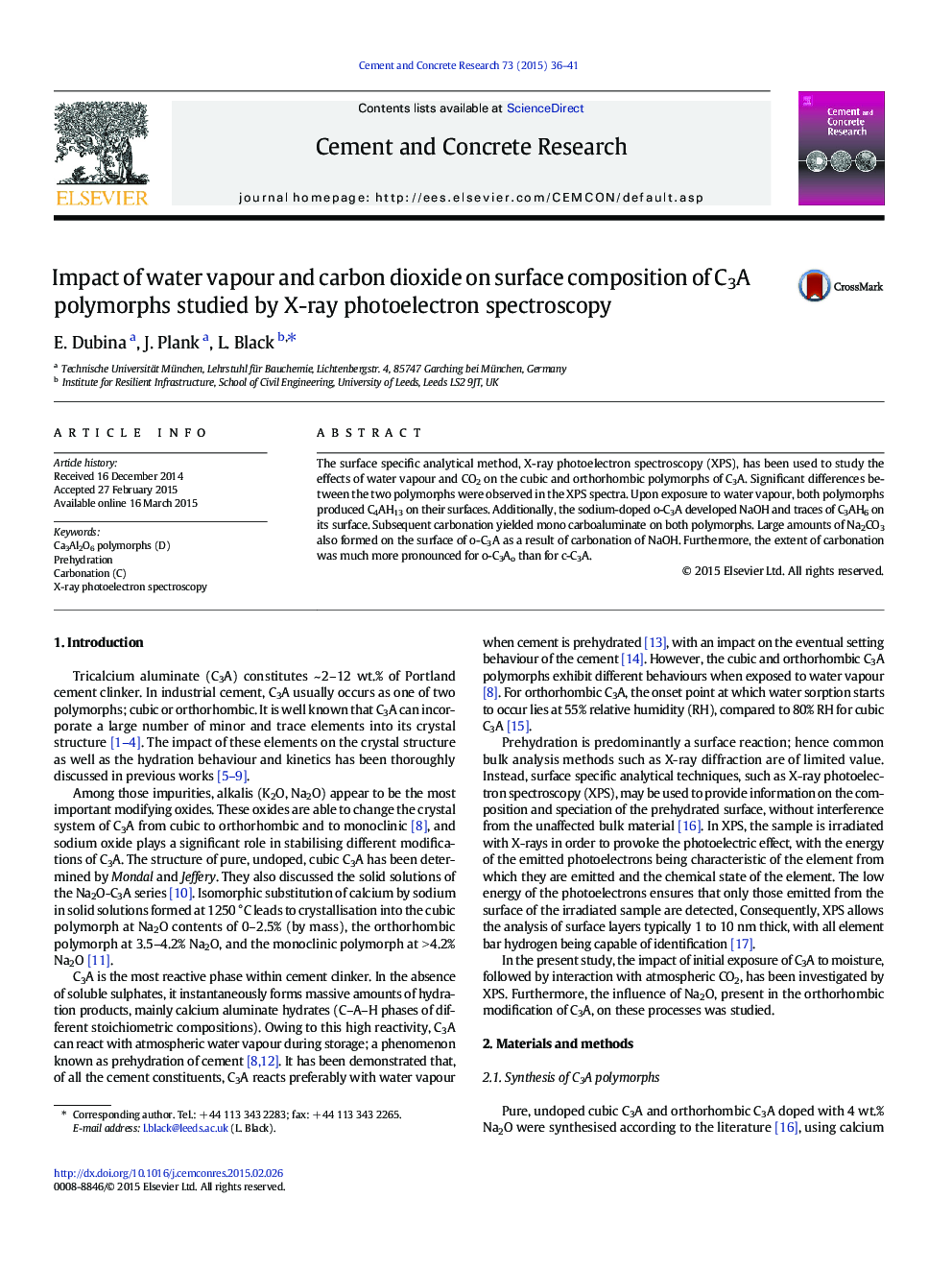| Article ID | Journal | Published Year | Pages | File Type |
|---|---|---|---|---|
| 1456132 | Cement and Concrete Research | 2015 | 6 Pages |
Abstract
The surface specific analytical method, X-ray photoelectron spectroscopy (XPS), has been used to study the effects of water vapour and CO2 on the cubic and orthorhombic polymorphs of C3A. Significant differences between the two polymorphs were observed in the XPS spectra. Upon exposure to water vapour, both polymorphs produced C4AH13 on their surfaces. Additionally, the sodium-doped o-C3A developed NaOH and traces of C3AH6 on its surface. Subsequent carbonation yielded mono carboaluminate on both polymorphs. Large amounts of Na2CO3 also formed on the surface of o-C3A as a result of carbonation of NaOH. Furthermore, the extent of carbonation was much more pronounced for o-C3Ao than for c-C3A.
Related Topics
Physical Sciences and Engineering
Engineering
Industrial and Manufacturing Engineering
Authors
E. Dubina, J. Plank, L. Black,
